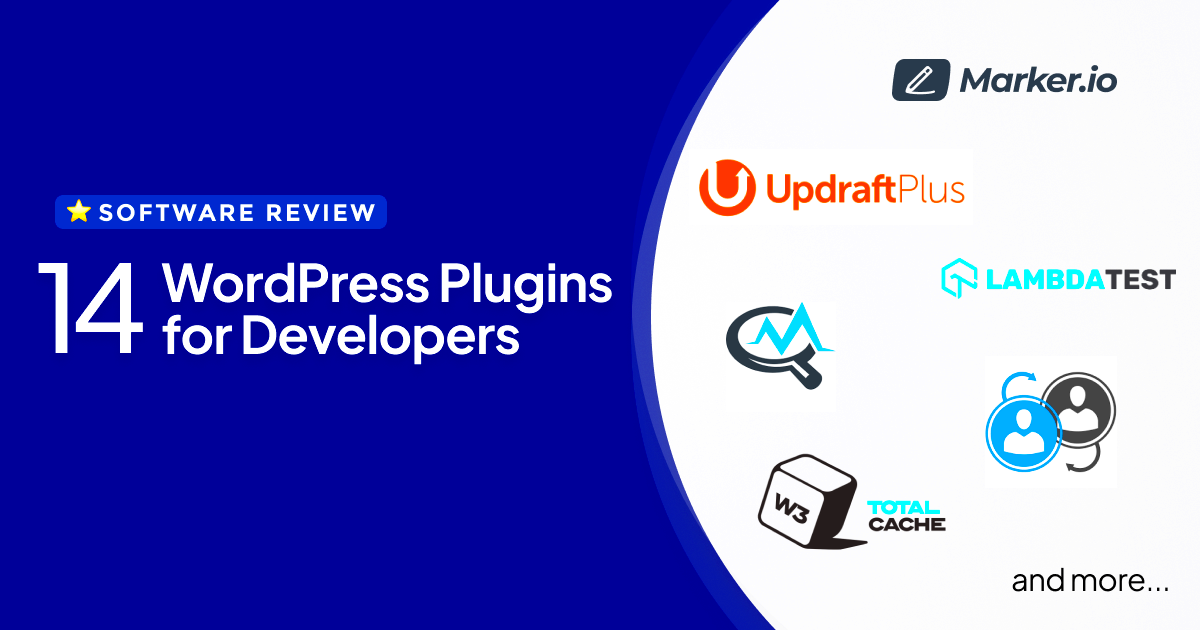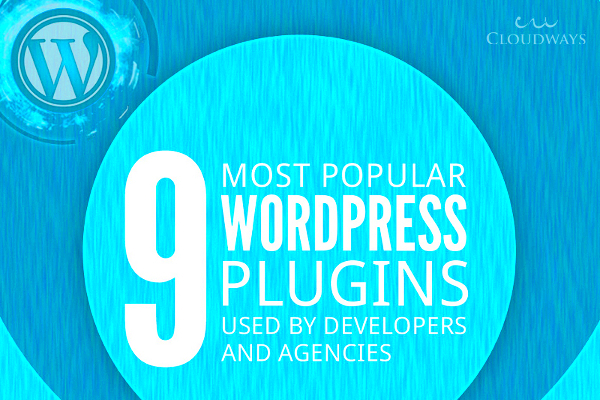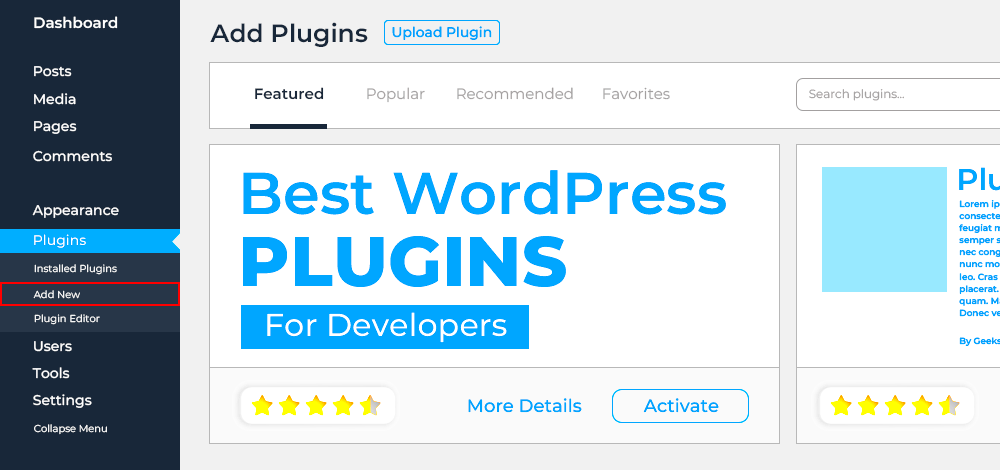WordPress plugins are like magic potions for your website, enabling you to add unique features and functionality without needing to write complex code. With thousands of plugins available, they empower users to expand their site’s capabilities, from improving SEO to enhancing security. Whether you’re a business owner or a developer, understanding
Why Developers Should Use Plugins

For developers, using plugins offers several advantages that can streamline workflows and enhance project outcomes. Here are some compelling reasons why integrating plugins into your development strategy is essential:
- Time Efficiency: Plugins can save a significant amount of development time. Rather than building features from scratch, developers can leverage existing solutions.
- Cost-Effective: Building a site without plugins can lead to increased costs, especially if you have to develop custom functionalities. Plugins provide budget-friendly options for many functionalities.
- Enhanced Functionality: With thousands of plugins available, developers can add advanced features such as contact forms, social sharing buttons, and sliders without extensive coding.
- Community Support: Popular plugins often come with a robust community of developers who contribute to updates, security patches, and troubleshooting, making it easier to manage issues.
- SEO Benefits: Many plugins offer built-in tools for SEO optimization, allowing developers to help their clients’ websites rank better on search engines.
In essence, using plugins not only accelerates development but also enables the creation of powerful and dynamic websites that can adapt to ever-changing needs. So, why reinvent the wheel when there are so many fantastic tools at your fingertips?
Top WordPress Plugins for Developers

When it comes to enhancing the functionality of your WordPress site, plugins are an essential part of the equation, especially for developers. They’ve made life a whole lot easier by extending the capabilities of WordPress and speeding up development processes. So let’s dive into some of the most popular WordPress plugins developers swear by!
- Advanced Custom Fields (ACF): This powerful plugin lets you add custom fields to your WordPress edit screens. It’s perfect if you’re crafting custom themes and need a flexible way to manage your content.
- Yoast SEO: Want to boost your website’s visibility? Yoast makes it simple to implement SEO best practices without needing to be an expert. You can effectively manage metadata, sitemaps, and more.
- Elementor: A robust page builder that allows developers (and non-developers!) to create beautiful, responsive websites with drag-and-drop. It’s especially useful for quick turnarounds.
- WP Migrate DB: If you frequently move or copy WordPress sites, this plugin is your best friend. With WP Migrate DB, you can export your database, and it even handles serialized data.
- Wordfence Security: Security shouldn’t be an afterthought. Wordfence scans your site for vulnerabilities and keeps it safe with a powerful firewall, allowing you to focus on development without worries.
These plugins not only save time but also enhance the overall efficiency and effectiveness of development work on WordPress sites. Whether you’re crafting custom themes or managing SEO, having the right tools on hand makes a world of difference!
Development and Debugging Tools

Development and debugging are crucial phases in the WordPress development lifecycle. No developer wants to deploy a site with errors or bugs, right? Fortunately, a variety of tools can help streamline these processes.
- Query Monitor: This tool allows you to monitor queries, hooks, and even PHP errors right from your WordPress dashboard. You can identify performance bottlenecks quickly and efficiently.
- Debug Bar: A really handy plugin that adds a debug menu to your admin bar, displaying useful debugging information about queries, cache, and REST API calls.
- Log Deprecated Notices: If you’re using older code, this plugin will notify you of any deprecated functions that could potentially break your site in the future.
- WP CLI: The command line interface for WordPress; it allows you to manage your site more efficiently without dealing with the admin dashboard. It’s perfect for developers looking to automate tasks.
- Sublime Text / Visual Studio Code: While not WordPress-specific, these text editors provide fantastic editing capabilities, powerful plugins, and customization options for coding.
In summary, having the right development and debugging tools can significantly minimize frustration and expedite your workflow. By staying organized and swiftly addressing issues, you can maintain a robust and reliable web presence.
5. Performance Optimization Plugins
In the world of web development, speed matters. Users have little patience for slow-loading websites, and search engines favor faster sites as well. This is where performance optimization plugins come into play. These tools are designed to enhance your site’s speed and overall user experience, ensuring that visitors not only arrive but stay and engage with your content.
Let’s take a look at some of the most popular performance optimization plugins available for WordPress:
- W3 Total Cache: This plugin improves your server performance, caching every aspect of your site, from pages to database objects. With content delivery network (CDN) integration, it helps deliver your site faster from various geographical locations.
- WP Super Cache: A favorite for its simplicity, this plugin generates static HTML files from your dynamic WordPress site. Once generated, your server serves these files directly to users, reducing load time significantly.
- Autoptimize: This plugin optimizes your site’s HTML, CSS, and JavaScript code, compressing files to minimize their size. It also supports CDN integration to further improve loading times.
- Lazy Load by WP Rocket: By only loading images when they appear in the viewport, this plugin allows users to see your content faster while conserving bandwidth.
Optimizing a website for performance can increase user satisfaction, reduce bounce rates, and even lead to higher conversion rates. So, if you’re looking to give your WordPress site an edge, these performance optimization plugins are well worth considering!
6. Security and Backup Plugins
When it comes to running a successful WordPress site, security is non-negotiable. Cyber threats are always lurking, so safeguarding your website is a top priority for developers. Thankfully, there are numerous security and backup plugins that can help fortify your site against potential vulnerabilities.
Here’s a rundown of some standout security and backup plugins:
- Wordfence Security: Wordfence offers a comprehensive security solution featuring a firewall, malware scanner, and real-time traffic monitoring. It’s a stalwart guardian for your WordPress site, ensuring only legitimate traffic gets through.
- iThemes Security: This plugin helps strengthen WordPress security by addressing common vulnerabilities. It includes features such as two-factor authentication, brute force protection, and file change detection.
- UpdraftPlus: Regular backups can be a lifesaver. UpdraftPlus allows you to back up your entire site to various cloud services like Dropbox, Google Drive, or Amazon S3, and it makes restoration a breeze if anything goes awry.
- Sucuri Security: Sucuri provides a robust suite of security features, including security activity auditing, file integrity monitoring, and remote malware scanning, safeguarding against various web attacks.
Investing in security and backup plugins is like setting up a safety net for your website. Not only can they protect against threats, but they also ensure you have a reliable fallback plan should anything ever go wrong. Keeping your WordPress site secure gives you peace of mind so you can focus on what truly matters: creating great content!
SEO Plugins for Enhanced Visibility
In today’s digital landscape, having a well-optimized website is crucial for standing out from the crowd and achieving higher visibility in search engine results. This is where SEO plugins come into play! WordPress offers a variety of SEO plugins designed specifically for developers and content creators to enhance their website’s search engine optimization without needing to dive deep into technical jargon.
Here are some popular SEO plugins that developers swear by:
- Yoast SEO: One of the most widely used SEO plugins, Yoast SEO offers comprehensive features such as keyword research, content analysis, and meta description editing. Its user-friendly interface makes it a favorite among users of all skill levels.
- All in One SEO Pack: This plugin is known for its simplicity and effectiveness. It helps in optimizing titles, meta tags, and even offers XML sitemaps. Great for those looking for a straightforward solution to enhance their SEO.
- SEOPress: A robust yet affordable option, SEOPress provides advanced features like schema markup, social media integration, and Google Analytics support. It’s perfect for developers who appreciate an all-in-one tool.
To find the best fit for your website, consider the specific features you need. Whether you require detailed analysis or just basic optimizations, there’s an SEO plugin that can help elevate your site’s visibility. By leveraging these tools, developers can ensure that their WordPress sites get noticed by search engines—ultimately driving more organic traffic and increasing conversions.
Custom Post Type and Taxonomy Plugins
When it comes to creating a dynamic WordPress site, utilizing custom post types and taxonomies can significantly extend the functionality of your website. Developers often encounter situations where the default post types and taxonomies just don’t cut it. This is where custom post type and taxonomy plugins shine, allowing them to tailor content organization and display to meet specific needs.
Here are some popular plugins developers use to create and manage custom post types and taxonomies:
- Custom Post Type UI: This user-friendly plugin allows developers to easily register custom post types and taxonomies through a simple interface. No coding is required, making it accessible for those new to WordPress development.
- Pods: A versatile plugin, Pods enables the creation of custom content types and fields, as well as relationships between them. It’s particularly beneficial for developers looking to create complex data structures within WordPress.
- Advanced Custom Fields (ACF): While primarily focused on custom fields, ACF also facilitates the creation of custom post types and taxonomies, making it invaluable for developers who need to enrich their content with specialized data.
By utilizing these plugins, developers can enhance the way content is organized on their WordPress sites. Whether you’re creating a portfolio, a review site, or even an online store, custom post types and taxonomies allow for an intuitive and flexible content presentation. Ultimately, these tools empower developers to craft unique and engaging sites that cater to specific audiences and business needs.
Enhancing User Experience with Plugins
When it comes to creating a website that resonates with users, enhancing the user experience (UX) is key. WordPress offers a treasure trove of plugins specifically designed to elevate UX, ensuring your site is not only functional but also enjoyable to navigate.
One of the foremost plugins for enhancing UX is WPForms. This plugin makes it incredibly easy to create professional-looking forms. Whether you need contact forms, surveys, or payment forms, WPForms provides intuitive drag-and-drop features. Users appreciate straightforward interactions, and well-designed forms can significantly improve engagement.
Another powerful tool is Yoast SEO. It doesn’t just help with search visibility but also improves content readability, which contributes to a better user experience. With features that provide real-time feedback on your content, users are more likely to find what they need quickly when your website is optimized effectively.
Smush is a great option for optimizing images. Fast-loading sites are crucial for keeping users engaged, and Smush compresses images without losing quality, thus speeding up load times. Remember, a positive first impression often hinges on how quickly your site loads!
Last but not least, WP Super Cache improves loading times by serving a static version of your site. Users will appreciate the responsive and snappy performance, leading to longer visits and lower bounce rates.
In summary, enhancing UX with the right plugins can dramatically affect how users perceive and engage with your website. With a bit of investment in quality plugins, you can create an environment that keeps your audience coming back for more!
Best Practices for Using Plugins
While plugins are fantastic tools for enhancing your WordPress site, there are some best practices to keep in mind to ensure you’re using them effectively and safely.
1. Limit Plugin Usage: It’s tempting to install every plugin that seems useful, but this can lead to bloat. Aim for quality over quantity. A rule of thumb is to limit yourself to essential plugins that provide needed functionality.
2. Regular Updates: Always keep your plugins updated. Developers frequently release updates to fix bugs and improve security. Outdated plugins can be a vulnerability that hackers exploit. A simple update can save you a ton of trouble down the line.
3. Check Reviews and Ratings: Before installing a new plugin, take a moment to glance at its reviews and ratings. A plugin that’s popular and well-rated is often more reliable than those with scant feedback.
4. Test Before Going Live: If you’re considering a new plugin, install it in a staging environment first. This allows you to assess compatibility with existing plugins and overall functionality without affecting your live site.
5. Backup Your Site: Always back up your site before adding new plugins, especially if they make significant changes. This way, if something goes awry, you can restore your site to its previous state without losing data.
6. Remove Unused Plugins: If you’re no longer using a plugin, don’t just leave it dormant. Deactivate and delete it. Unused plugins can still pose a security risk and may conflict with other installed plugins.
| Best Practice | Description |
|---|---|
| Limit Plugin Usage | Prioritize essential plugins to avoid bloat. |
| Regular Updates | Keep plugins updated to enhance security and functionality. |
| Check Reviews and Ratings | Look for well-rated, popular plugins before installation. |
| Test Before Going Live | Use a staging site to see how new plugins work. |
| Backup Your Site | Always back up before adding or updating plugins. |
| Remove Unused Plugins | Delete inactive plugins to streamline and secure your site. |
By following these best practices, you can optimize the performance of your WordPress site while keeping it secure and user-friendly. Happy plugin hunting!
Conclusion and Next Steps
In conclusion, utilizing popular WordPress plugins can significantly enhance your development process, streamline site management, and improve user experience. By carefully selecting the right combination of plugins, developers can harness the power of WordPress to create robust and feature-rich websites. The plugins discussed earlier are not only widely used but also highly recommended for their functionality, reliability, and regular updates.
As you move forward, consider implementing the following steps:
- Assess Your Needs: Evaluate your project requirements to determine which plugins will provide the most value.
- Research: Stay updated with plugin reviews and community feedback to select the best options.
- Test Before Use: Always test plugins on a staging environment to ensure compatibility and avoid conflicts.
- Optimize and Maintain: Regularly update your plugins and remove those that are not in use to maintain optimal performance.
Here’s a quick reference table of the popular plugins discussed:
| Plugin Name | Functionality | Popularity |
|---|---|---|
| Yoast SEO | Search Engine Optimization | Highly Popular |
| WooCommerce | E-commerce Solutions | Extremely Popular |
| Elementor | Page Builder | Highly Popular |
| Wordfence | Security | Very Popular |
| Contact Form 7 | Form Management | Widely Used |
By taking these actionable steps, you’ll be better equipped to create dynamic and agile WordPress sites. Happy developing!



